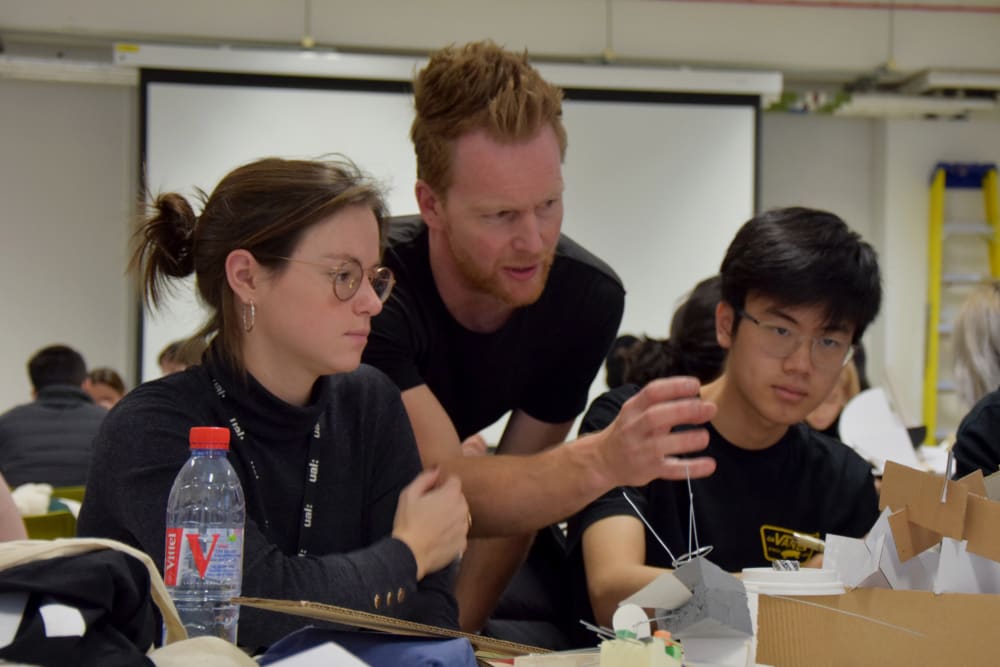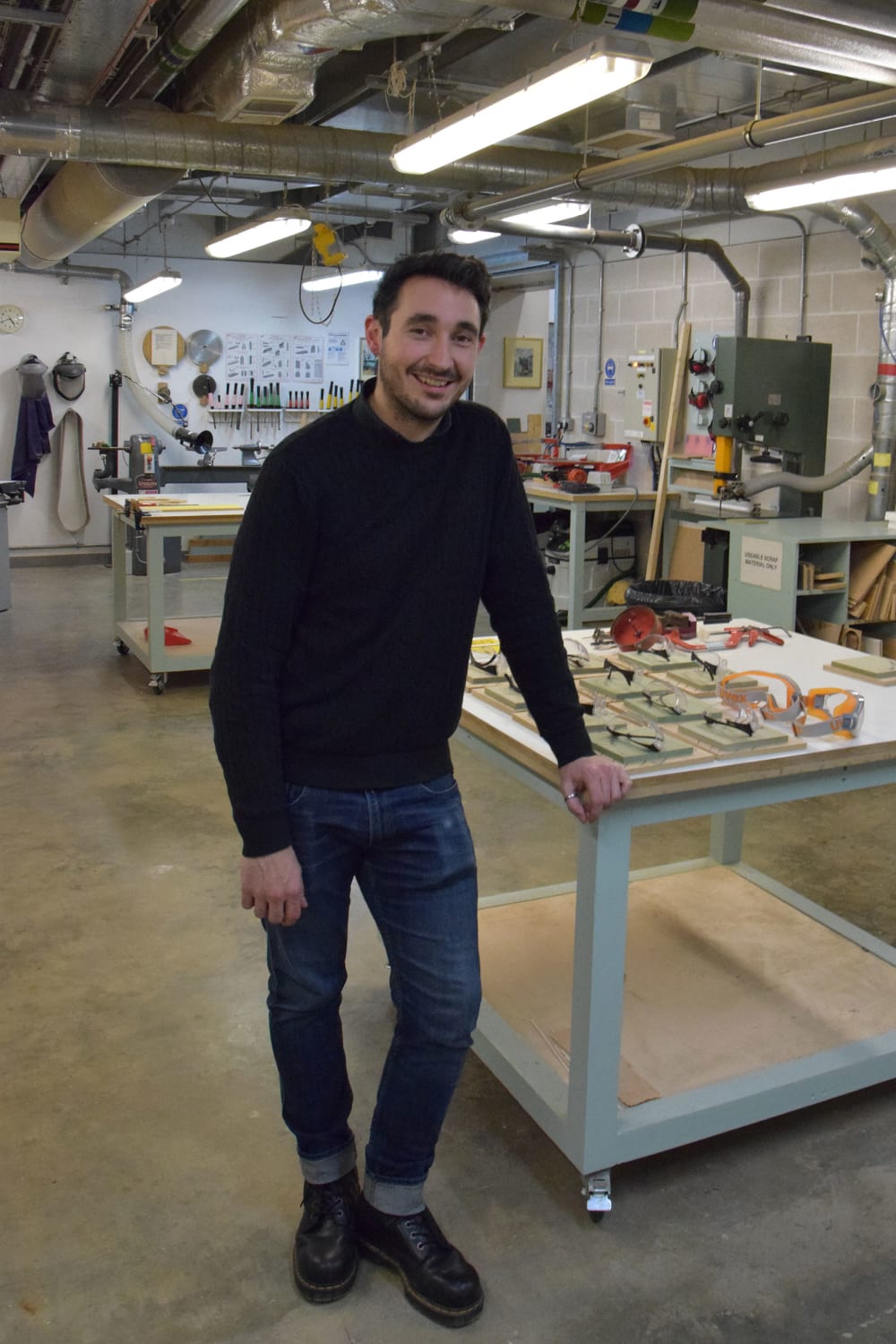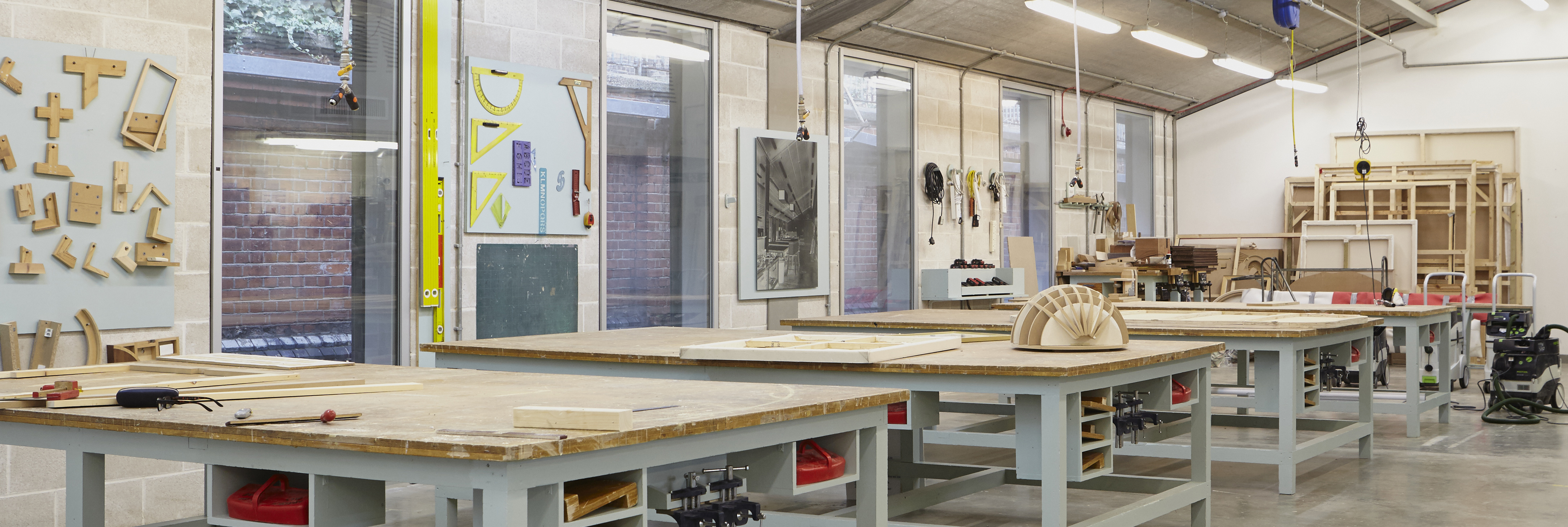The technicians at Chelsea College of Arts are a key part of our teaching and learning staff. We talk to Stefan Willis and Richard Barton in the material and spatial practices team about how their role supports students studying at the college.

, Chelsea College of Arts, UAL
Stefan, what is your role at Chelsea?
I am in a studio-based position as Specialist Technician, Learning and Teaching for 3D Model Making.
Which courses do you work with?
My role sits within the material and spatial practices team. I work across several of the design courses at Chelsea including, BA Interior Design, BA Product and Furniture Design and Graduate Diploma Interior Design.
Do you have a technical specialty?
As my job title suggests, it's model making and my role is about helping students to develop their skills and understanding of model making and prototyping. Design project briefs always ask for models to be made and as such we make models for developing and testing ideas, right through to final presentation models from a range of materials.
How has your role evolved?
As a studio-based technician, I now work alongside course academic staff, allowing me a clearer understanding of the course and what the students are required to do. It's also proven to give me an opportunity to get to know much more about students and their individual and diverse backgrounds. I am now part of project briefings and often give studio-based lectures around model making to group sizes from 30 to over a 100 students.
What does a typical day involve?
I often say that no 2 days are the same. That's what makes this role so interesting. Even though students on a course will each have the same brief, the diversity of ideas is vast. I spend a lot of my time having tutorials with the students about their projects and their ideas. My role requires lots of what is known as reflection-in-action where I am constantly answering, 'how can I make this?'. It involves a lot of thinking on your feet and allowing the making process to happen smoothly and swiftly, so it doesn't hinder the design process. I certainly spend a lot of time talking, but interestingly the tool I now use the most is my laptop.
Can you please tell us about a project you have recently worked on with students?
I recently worked with BA Interior Design first year students on a project which asked them to create a small-scale intervention on a standard metal door handle. I ran a model making day where I asked each student to make a copy of the handle out of styrofoam using simple tools and sandpaper. As a material, styrofoam is far easier to engage with than the original metal handle and led to the students being able to test ideas through slicing, carving, sticking and sanding, creating a wonderful range of design possibilities. We had a lot of fun in the design process.

, Chelsea College of Arts, UAL
Richard, what is your role at Chelsea?
I currently work across Chelsea and Camberwell as a member of the material and spatial practices team supporting BA and MA courses within Interior Design, Interior Spatial Design, Product and Furniture Design and Designer Maker. I previously worked at Wimbledon College of Arts where I supported both fine art and performance.
Do you have a technical speciality?
In many ways I am a traditional maker trained in metalwork. I started working at the university as a metalwork support technician. Since then my practice and interests have evolved and I am interested in the space between traditional making and digital design and manufacture. I now use digital design to compliment my traditional making.
How has your role evolved with the new ways of working?
My interest in digital design has been born out of the evolution of my role at the university. Creative making is changing so rapidly with the assistance of new technologies and the designer and maker have embraced these techniques. My role in supporting the students on their journey has had to adapt to follow these changes and it’s one of the best things about working here.
Tell us about a project have you recently worked on with students?
Most recently I was working with a group of third year students providing technical tuition to assist them with designing and making wearable interventions. These designs involved looking at interfering with how people interact with personal devices such as mobile phones. The project ended in a parade of their finished objects across the Chelsea Rootstein Hopkins Parade Ground.
Find out more about Chelsea’s courses.
Explore Chelsea's technical facilities.

